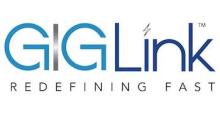Dalton, Georgia, Ramps it Up, Offers 10 Gigabit Residential Service Tier
Less than a year ago, we reported on Dalton, Georgia’s transition to becoming the first gigabit city in the state. In August, the community took it up a notch when they began offering 10 gigabit residential Internet access from Dalton Utilities’ OptiLink.
As Foretold by Hank
When we interviewed Chief Technical Services Officer Hank Blackwood last November about the new gigabit tier, he told us that 10 gig plans were in the works. The boost in capacity is part of the city’s long-term vision to lure more tech innovators to Dalton. In addition to attracting firms able to offer more jobs, community leaders want to provide an environment ripe for entrepreneurs who may find working from home the secret sauce.
From the press release announcing the new 10 gig service for $349.95 per month:
“We are proud to offer our residents the very best in ultra-high-speed Internet and next-generation video, delivering services wanted and needed by so many communities,” says Dalton Utilities’ Hank Blackwood, Chief Technical Services Officer. “Very few areas have this level of fiber optic capability.”
Subscribers can still sign up for OptiLink at gigabit, 100 Megabit per second (Mbps), 75 Mbps, and 50 Mbps services. When bundled with phone or OptiLink’s new VidLink service, subscribers can cut stand-alone rates by around $5 per month. All tiers provide symmetrical service.
Check out residential OptiLink rates here.
Sweet Sixteen
Since 2003, residents and businesses have enjoyed access to fiber optic connectivity from Dalton Utilities. Like other public utilities, in the late 1990s utility management originally decided on fiber optic infrastructure investment as a way to better manage and control other utilities such as electric, water, gas, and water. As Dalton developed their supervisory control and data acquisition (SCADA) system, larger businesses in the community approached them and asked for connectivity via the fiber network.



